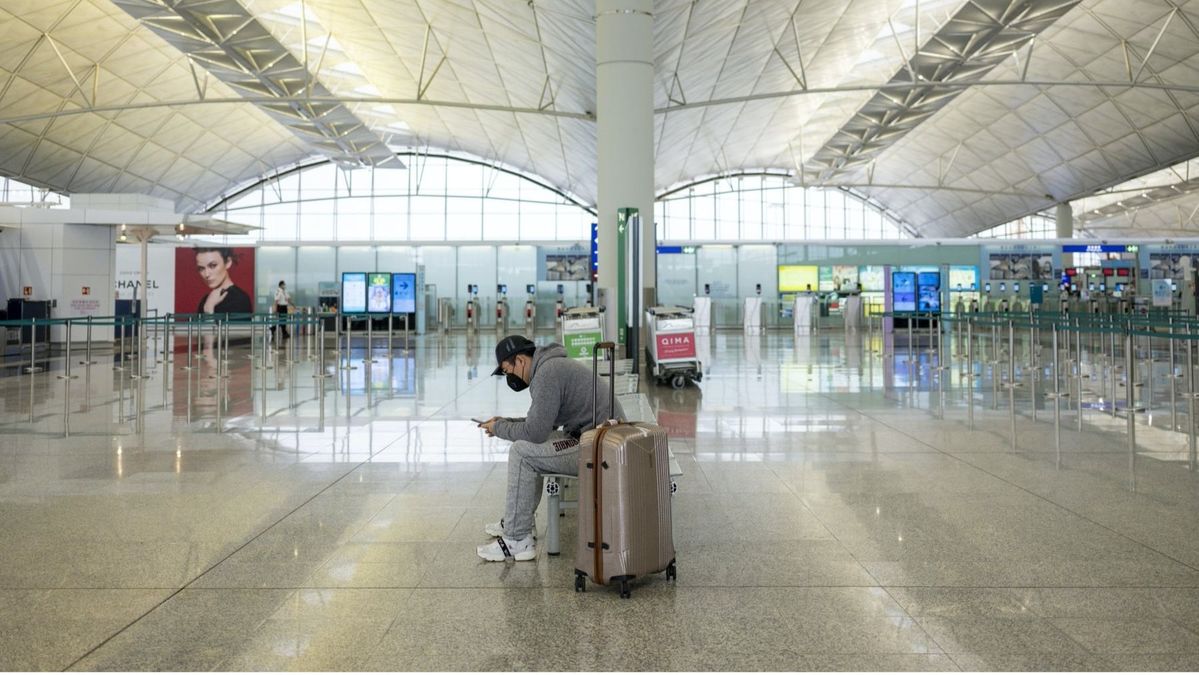IATA: air travel's 2021 rebound threatened by virus flares
The resurgent virus threatens a fragile recovery, especially in the Asian aviation market.

Forecasts for a significant recovery in air travel this year could be wide of the mark as new coronavirus strains extend travel restrictions, according to the airline industry’s trade body.
Passenger traffic may improve by only 13% compared with last year in a worst-case scenario, the International Air Transport Association said Wednesday. That compares with an official forecast of a 50% rebound issued in December.
Tough curbs on cross-border trips in response to new Covid-19 flareups could stifle a recovery despite strong pent-up demand, IATA Chief Economist Brian Pearce said in a media briefing. Herd immunity may be required before restrictions are eased, something that could be delayed by the identification of new viral strains.
“There’s a recovery, but it’s a much smaller recovery,” Pearce said. “What we’ve seen in recent weeks is governments taking a much, much tougher, more cautious approach.”
Passenger traffic fell by almost two thirds last year compared with 2019, IATA said. While the steepest drops came in April, the re-imposition of lockdowns meant the December figure was 70% lower, extending to 85% on international routes. Cargo demand fared much better, sliding only 11%.
Should the lower estimate for a 13% improvement come to pass, that would equate to 38% of the level seen before the pandemic, IATA said.
As a result, IATA Director General Alexandre de Juniac said carriers may require as much as $80 billion more in government funding to survive the year.
Another setback for Asia’s fragile aviation market
The fragile recovery in Asian aviation is hardest-hit, with a resurgence of Covid-19 in the region pushing back forecasts for when air travel will get back to pre-virus levels.
Chinese seat capacity on domestic and international flights has fallen more than 20% from the end of September, when it almost got back to January 2020 levels, according to OAG Aviation, a flight data and analytics provider.
People are being encouraged not to travel over the Lunar New Year period, which runs through early March, suggesting capacity may not rise until late this quarter.
The rapid rebound in Chinese aviation had been a rare bright spot for jet fuel, which has taken the biggest hit among oil products from the pandemic.
The drop in flights is more bad news for Asian refiners that are also struggling with weakening demand for other transport fuels. It’s been offset, however, by increased consumption of kerosene due to a colder-than-normal winter.
“The depth of the latest Covid-19 spike, its impact on aviation and subsequent consumer demand suggests that the hoped for recovery toward the back end of 2021 may not be as strong as expected,” said Mayur Patel, head of Asia at OAG Aviation.
A full recovery in Asian air travel may now take until 2025, instead of the company’s previous forecast of 2024, he said.
Reverse course
China’s transport ministry has said the total number of trips – by air, road and rail – over the LNY period will be 40% lower than 2019. Seat capacity was 98% of January 2020 levels at the end of September, just before the Golden Week holiday, the OAG data show, before falling to 77% in late January.
While the recovery in flights wasn’t as strong in other Asian nations, it’s also gone into reverse.
Thailand and Malaysia – particularly dependent on tourism – are among the hardest-hit markets.
Thai seat capacity is at 13% of pre-virus levels after getting back to 46% in late-December, according to OAG. Malaysia, which reached 31% of pre-pandemic seat capacity late last year, is at 11%.
Malaysia placed most of the country under some form of lockdown last month and officials will decide whether to extend it on Thursday.
There are no immediate signs of a recovery in flights in Thailand and Malaysia and there’s concern over the long-term viability of domestic airlines. OAG’s Patel said.
European flight activity looks worse than China, although better than Thailand and Malaysia. Air traffic will be 72% below 2019 levels in February and March, according to the most optimistic estimate from Eurocontrol.
Covid-19’s comeback has seen Asian governments delay plans to allow more air travel between countries, with a planned link between Singapore and Hong Kong called off late last year as cases spiked in the Chinese territory.
Vaccination rollouts are expected to drive a gradual increase in flights, however, and corridors for business travelers could open up in the region.
“The resurgence has put paid to the initiation of travel bubbles across the region,” said Subhas Menon, director general of the Association of Asia Pacific Airlines. “What is worse is the seemingly haphazard and incoherent introduction of stricter control regimes affecting air travel.”
This article is published under license from Bloomberg Media: the original article can be viewed here